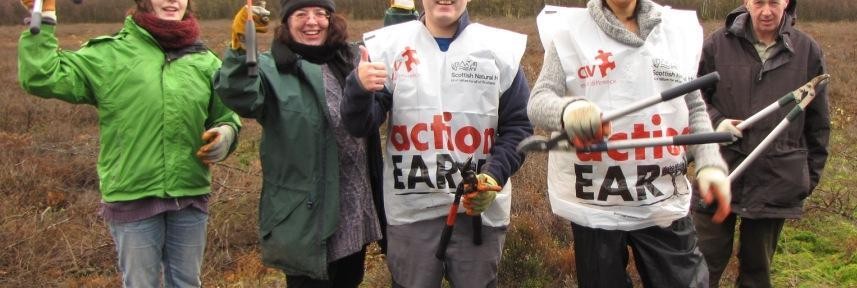
Time for an update on my personal project! The proposed Seven Lochs Wetland Park now has a dedicated volunteer group to help with the habitat management and enhancement of the site. The group, aptly named the Seven Lochs Volunteers, grew from the team of twelve butterfly transect volunteers who surveyed two of the Wetland Park’s Local Nature Reserves this year (incidentally, please have a read of an article about their achievements in Scottish Invertebrate News!).
To plan a practical work programme for the new volunteer group I met with partners at sites within the Wetland Park boundary. Together we came up with a variety of task days to run from October to March next year. Many thanks to staff at North Lanarkshire and Glasgow City Councils, Forestry Commission Scotland, and Froglife for your support. During September and October I worked hard to recruit more volunteers, which included putting up posters in shops, libraries, job centres etc. In the past I’ve found posters don’t provide a high return, so I also spoke to people working with the local communities. I met staff at The Wellhouse Community Trust and SAMH (Scottish Association for Mental Health) to talk about working together to increase membership. So far ten new members have attended the task days, four of which live locally.
The first session was at Drumpellier Country Park’s Wildlife Garden on Thursday 11 October. It’s amazing how much five volunteers can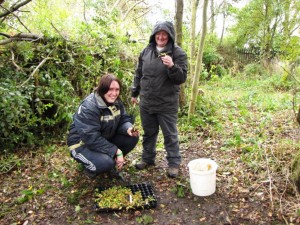 achieve in five hours! With the help of North Lanarkshire Council’s Countryside Ranger Service, we coppiced several alders, crowed some hawthorn, felled young ash, and placed all the cut wood carefully onto the dead-hedge, which is an excellent home for invertebrates and hedgehogs. Once an area of the site was open to more light we planted wildflowers, such as red campion.
achieve in five hours! With the help of North Lanarkshire Council’s Countryside Ranger Service, we coppiced several alders, crowed some hawthorn, felled young ash, and placed all the cut wood carefully onto the dead-hedge, which is an excellent home for invertebrates and hedgehogs. Once an area of the site was open to more light we planted wildflowers, such as red campion.
 The second task day was on Wednesday 24 October. Four volunteers helped to put in a
The second task day was on Wednesday 24 October. Four volunteers helped to put in a 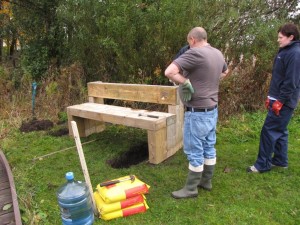 carved bench and planted some saplings to protect the boundary of the Wildlife Garden. After that we explored the Country Park and performed a simple habitat survey of the trees, fungi and birds. One of the volunteers said it’d had been the most fun they’d had in weeks, which was great to hear!
carved bench and planted some saplings to protect the boundary of the Wildlife Garden. After that we explored the Country Park and performed a simple habitat survey of the trees, fungi and birds. One of the volunteers said it’d had been the most fun they’d had in weeks, which was great to hear!
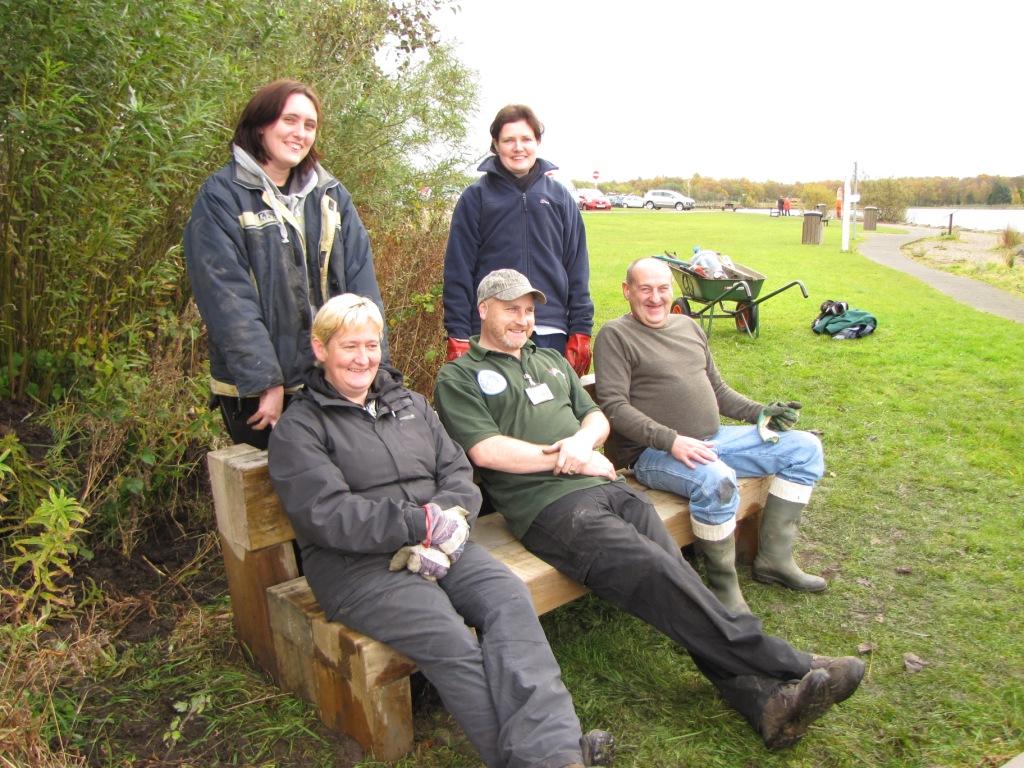
Saturday 11 November saw five volunteers heading to a new location; Commonhead Moss Local Nature Reserve. This time the support came from Glasgow City Council. The site is primarily a raised peat-bog and the council have been working to restore it for several years. Thanks to some funding from CSV Action Earth, t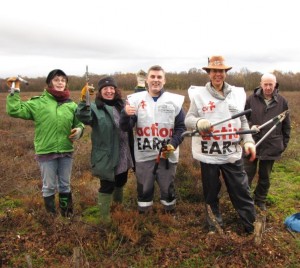 he volunteer group is helping to continue that restoration work by removing birch saplings and cutting back re-growth. During the morning the team worked extremely hard and started to win the battle against the birch. After lunch I led the group on a short tour to show them the other half of the bog which has the kinds of mosses and plants you’d expect to see growing in a healthy raised bog. It was extremely wet, squelchy and hard going, but it was well worth doing. Partly because it proved an excellent team-building exercise as volunteers helped each other through the tricky patches! Mostly though it helped the team to understand what a healthy raised-bog looks like.
he volunteer group is helping to continue that restoration work by removing birch saplings and cutting back re-growth. During the morning the team worked extremely hard and started to win the battle against the birch. After lunch I led the group on a short tour to show them the other half of the bog which has the kinds of mosses and plants you’d expect to see growing in a healthy raised bog. It was extremely wet, squelchy and hard going, but it was well worth doing. Partly because it proved an excellent team-building exercise as volunteers helped each other through the tricky patches! Mostly though it helped the team to understand what a healthy raised-bog looks like.
This Friday we’re at the same reserve to continue removing the birch and we’re also going to install some plastic dams. This should help to keep water within the bog, which will gradually prevent the re-growth of birch and encourage more boggy plants to grow. The wetter the site the better! Needless to add I’ve roped in some expert help for Friday’s session, because I’ve not installed dams at a raised-bog before!
Following the John Muir Award Leadership training earlier this year, I’ve been able to offer the John Muir Award to the regular volunteers. I’ve found the award is a very useful tool to help with the planning of task days. In order to fulfil all the aspects of the award, 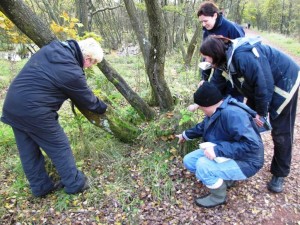 volunteers need to explore and discover the biodiversity of the site they’re working in. I’ve realised this helps volunteers to gain a greater understanding of why the conservation tasks are needed and then they value their contribution so much more.
volunteers need to explore and discover the biodiversity of the site they’re working in. I’ve realised this helps volunteers to gain a greater understanding of why the conservation tasks are needed and then they value their contribution so much more.
I’m really enjoying working with volunteers and learning how to plan, organise and coordinate a lovely bunch of people. Several new members have joined the team, many of which are from the local area, so I’m delighted with how my project’s going so far. I believe the volunteer group is a good way to facilitate community involvement in the Seven Lochs project and I’m looking forward to seeing how things develop over the coming months.
That’s all for now!
